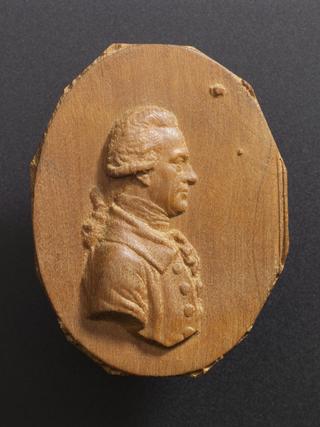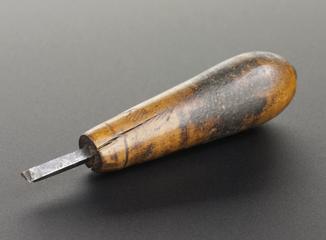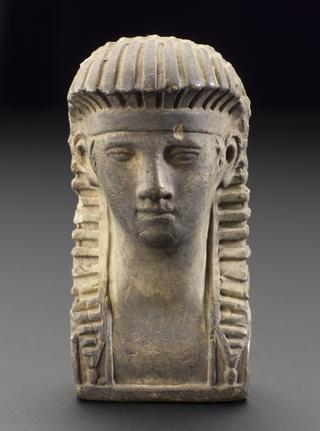
Short mahogany strip brass pin gauge with eight pins
- maker:
- James Watt








Short mahogany strip brass pin gauge with eight pins, by James Watt, Glasgow, Scotland, 1758-1769. Used for positioning the drilling of flute finger holes. Piccolo size, larger than the Royal College of Music (RCM) 763 example, possibly high pitch English flageolet like RCM 326 Ft 1.
James Watt eventually employed 16 people to run a shop in Glasgow making numerous items. In spite of saying that music was ‘the source of idleness’, he built instruments for sale, including flutes, an organ and a guitar for the wife of one of his early business partners, John Roebuck. This item is likely to have been made on the suite of flute-making tools which survives in Watt's workshop - using a gauge to mark the positions of the finger holes prior to drilling them would have speede up the manufacturing process.
Details
- Category:
- James Watt's Garret Workshop
- Object Number:
- 1924-792/2369/2
- Materials:
- brass (copper, zinc alloy) and mahogany (wood)
- Measurements:
-
overall short gauge (eight pins): 27 mm x 251 mm x 14 mm, 0.028kg
- type:
- pin-gauge and marking gauge
- credit:
- Major J.M. Gibson-Watt




